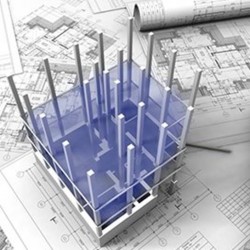Offsite construction is an efficient way to construct wood buildings, says architect Randall Walter, who is from a design-build firm that makes a strong case for why its future is now.
Walter, of New Hampshire-based Bensonwood, says tight project timelines and restrictive budgets are among the reasons that make offsite construction of building components a viable alternative to traditional building practices for housing and other buildings.
Walter's firm has done more than 200 custom-built projects, many of which were largely built offsite in its shop in a design-build process he calls "montage building." Timber frame walls and roofs are examples.
The unusual building process allows the company to weave together various pre-built building components to complete a weather-tight structure — typically a home — on-site in as little as a week.
Walter delivered a seminar recently at the Wood Solutions Fair in Toronto on the status of offsite wood construction and its future.
The architect says offsite construction offers a more precisely constructed building. At Bensonwood, the goal is to achieve buildings that fit together on-site to within a 32nd of an inch without any complications.
Building Information Modelling (BIM) is a key part of the process, he told the seminar, noting that all the team players from consultants to subtrades must buy into the 3-D software process from the outset.
Currently in the U.S., he says, too often the tape measure gets in the way of construction progress because different trades take measurements on-site rather than rely on BIM measurements. It can lead to dimensional discrepancies.
"We don't think you have to swing a hammer faster offsite and on-site; you simply have to be organized in a different way to make use of that BIM information," he explains.
Walter says Bensonwood creates a 3-D model that complies with the building code, including issues such as headroom space and egress width.
"We don't do it for fabrication; we do it so other people in the team can see it," he says.
Bensonwood not only fabricates wood assemblies offsite but in some cases actual rooms completely fitted out. Bathrooms are an example.
They typically are the smallest room in a building, but they also typically require the most trades to complete, Walter says, noting that offsite fabrication "can really move the needle forward on the overall project time."
He told seminar attendees that Bensonwood prefers to specify dry finish materials for speed of construction. They eliminate the time wet finish materials require on-site to complete.
Tight or remote sites are often a better fit for offsite fabrication as long as the property is accessible for pre-fabricated materials, Walter says.
Another advantage to offsite construction is with materials recycling.
One of its limitations, however, is that changing layouts, such as moving windows, doors or such fixtures as toilets, can be complicated, more so than in traditional build projects.
Calling the state of building in the U.S. as "really quite flawed," he told the audience that on many sites, (home building is a case in point) other than the development of the manufactured truss, the industry has progressed little in 200 years.
Safety hazards and improperly stored raw materials are probably as prevalent on-site today as they were in the 1800s, he says.
Original link - Daily Commercial News









